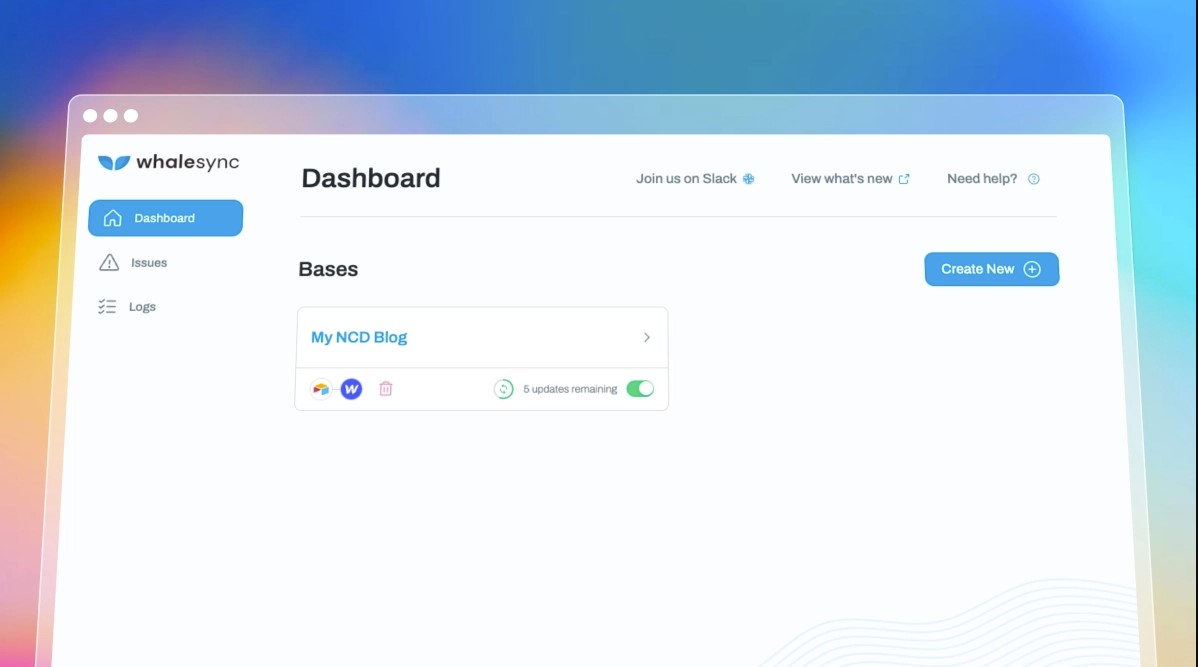There’s no denying that no-code tools are revolutionizing the way apps are created, especially in the corporate world where technology that can reduce costs is frequently valued highly. According to recent Gartner surveys, 80% of non-IT professionals will develop IT products and services by 2024, with over 65% of them using low-code/no-code tools, and 70% of new business apps will use low-code/no-code technologies by 2025.
The market for no-code is therefore lucrative and saturated with vendors. However, Whalesync is making an effort to differentiate itself from the competition with a tool that bi-directionally transfers data between well-known SaaS apps, such as Airtable, Webflow, and Notion.
About a year ago, Curtis Fonger and Matthew Busel co-founded Whalesync. The CEO of Whalesync, Fonger, started his career working on OneDrive file syncing at Microsoft and sold his first company, no-code website builder Appetas, to Google in 2014. Busel is a former MakeSpace product manager who now works occasionally as a no-code consultant.
On the co-founder matching website run by Y Combinator, Fonger and Busel connected in the spring of 2021. They had initially intended to develop a no-code app builder, but after consulting with operators closely, they realized that data syncing presented a more lucrative opportunity. Fonger stated that users were “painfully stitching together data across their SaaS apps and trying to solve the problem with automation tools.” We discovered teams could open up new use cases by syncing their apps rather than creating one-way data pipelines, drawing on my experience at OneDrive.
By no means is Whalesync the first platform to sync data between SaaS apps. According to Technavio, the market for enterprise file sync and share tools could be worth $12.84 billion by 2026.
PieSync, a tool that connects a variety of cloud apps and syncs contacts stored in those apps two-way, is one of the most recent no-code data-syncing tools to hit the market. Additionally, there is Grouparoo, an open source platform owned by Airbyte that syncs data between databases and cloud-based applications.

According to Fonger, a spreadsheet that businesses can use to manage and automatically sync their data across SaaS apps is what makes Whalesync unique. Users can create no-code apps with Bubble, set up internal tools with Notion and Postgres, etc.
Fonger explained that Whalesync differs from conventional data pipelines or automation tools. We’re conceptually similar to Dropbox, but we sync data between SaaS applications rather than files between computers. We’ll take care of the rest; all you have to do is tell Whalesync how to match up tables and fields between SaaS apps.
Whalesync stores the data that it keeps in sync in order to enable bi-directional sync, according to Fonger. If users choose to close their accounts or delete their sync configurations, they can opt to delete that data.
Whalesync was able to gain traction relatively quickly after its February 2021 launch, enlisting hundreds of customers and increasing recurring revenue at an average rate of 38% per month, perhaps in part due to the tool’s ease of use. Recent pre-seed funding of $1.8 million led by Y Combinator with contributions from Liquid 2, Soma Capital, and Ascend shows at least some investor confidence in the company’s strategy.
Whalesync intends to increase its six-person team by another four to five members by the end of 2023.
“The modern data stack has become more and more prevalent over the last few years. To move data into and out of data warehouses, large businesses use extract, transform, and load (ETL) and reverse-ETL pipelines, according to Fonger. We took what we learned from these best practices and developed novel technology to make setup easier and give small and medium-sized businesses, who presently use automation tools to send data between applications, access to the power of data syncing.
 Tech Gadget Central Latest Tech News and Reviews
Tech Gadget Central Latest Tech News and Reviews




